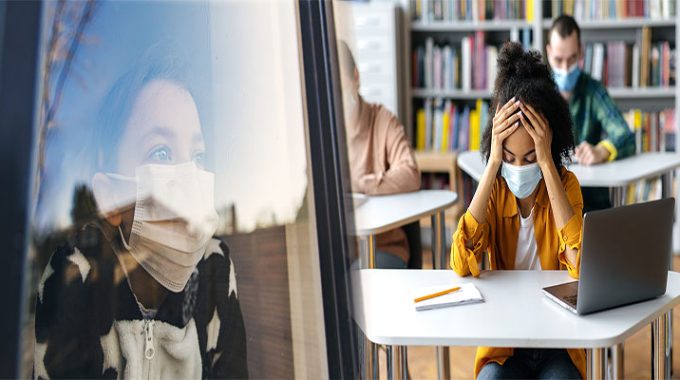Pandemic fatigue is a condition that has been linked to increased levels of influenza-like illness and has been shown to occur before the flu season begins. The pandemic flu virus causes symptoms like fever, coughs, headaches, muscle aches and fatigue. In addition to these symptoms, pandemic fatigue can cause additional issues such as nausea or vomiting in some people.
The average person in the U.S. is exposed to up to 100,000 chemical compounds annually in the air they breathe, water they drink and food they eat.
The average person in the U.S. is exposed to up to 100,000 chemical compounds annually in the air they breathe, water they drink and food they eat.
These chemicals can include pesticides, herbicides, preservatives and sweeteners. We also come into contact with industrial products like synthetic fragrance or flavorings that are used in everyday products like shampoo or soap. Even our clothes have chemicals on them! The list goes on and on…
A pandemic is declared after a fatal or nearly fatal disease outbreak occurs in a region; it has continued there for at least 1 month and causes at least 5% of deaths in the area.
A pandemic is an epidemic of infectious disease that has spread through human populations across a large region, and also to other regions. It has affected at least one country in each of the six WHO regions. A pandemic may be declared after a fatal or nearly fatal disease outbreak occurs in a region; it has continued there for at least 1 month and causes at least 5% of deaths in the area.
A pandemic does not necessarily have to occur globally; however, all three waves of Zika virus infections have been global outbreaks so far (in 2016-2017).
Infectious diseases are caused by microorganisms that invade living cells and multiply inside them, spreading from one cell to another until all tissues or organs are affected.
Infectious diseases are caused by microorganisms that invade living cells and multiply inside them, spreading from one cell to another until all tissues or organs are affected. The ensuing inflammation causes damage to the body’s tissues, which can lead to death if not treated properly.
A pandemic is defined as an epidemic occurring on a scale that crosses international boundaries; it can be caused by either a new strain of an existing pathogen or an entirely new pathogen for which humans have no immunity.
One of the most prominent characteristics of pandemic influenza viruses is their ability to undergo genetic changes, creating new strains that may be more dangerous than previous ones.
One of the most prominent characteristics of pandemic influenza viruses is their ability to undergo genetic changes, creating new strains that may be more dangerous than previous ones. Influenza virus mutations can occur in two ways:
- A single mutation within the genome of an infected cell will result in a change to its protein structure and function. This can lead to milder symptoms or even no symptoms at all (meaning you still have it). However, sometimes these changes make the virus more virulent–that is, capable of causing disease–and therefore more dangerous for humans.
- Another type of mutation happens when two different viruses infect one host cell together; this causes them both to exchange their genes with each other’s DNA sequences through a process called reassortment or recombination. This allows for rapid evolution because each new strain contains combinations from multiple sources; as such, they’re able to evade our immune system’s defenses much faster than expected!
When someone who is infected coughs or sneezes, viruses can spray out into the air as far as 7 feet away from them, spreading easily via droplets that fall onto objects such as keyboards or doorknobs and remain active long enough to transmit infection if you touch them after someone with flu symptoms has been near them.
When someone who is infected coughs or sneezes, viruses can spray out into the air as far as 7 feet away from them, spreading easily via droplets that fall onto objects such as keyboards or doorknobs and remain active long enough to transmit infection if you touch them after someone with flu symptoms has been near them.
If you have recently been exposed to the flu virus but don’t yet feel sick with fever, body aches and fatigue:
- Stay home from work until at least 24 hours after your symptoms begin (if possible). This will help prevent others at work from getting sick too soon before they realize it’s contagious; this will also reduce their odds of contracting influenza since they were not exposed during its incubation period when they were healthy enough to fight off infection successfully on their own without medication (the average duration of which is 2 days). Some people may need more time than others depending on how quickly their bodies respond–so listen carefully!
The flu vaccine protects against three or four different types of influenza viruses that keep changing every year so that scientists can keep up with these changes through vaccines they create each year.
The flu vaccine protects against three or four different types of influenza viruses that keep changing every year so that scientists can keep up with these changes through vaccines they create each year. Flu shots are made from killed or weakened viruses and are usually given in the arm, but if you have a severe allergy to eggs, you can get a shot in your upper thigh (called an intradermal injection).
You should get your flu shot every year unless: You’re allergic to any ingredient in the vaccine; You’re pregnant; Your body has already made enough antibodies against this particular strain of flu virus; The person giving the shot is not sure whether it’s okay for them to give it because they don’t know who else has been around recently
You can protect yourself from pandemic fatigue
- Wash your hands frequently.
- Avoid contact with people who are sick.
- Stay home if you’re sick, and don’t go out in public until at least 24 hours after your symptoms have gone away (48 hours if it’s flu season).
- Avoid touching your eyes, nose and mouth as much as possible–this helps prevent the spread of germs to others around you!
- Get a flu shot every year for protection against the seasonal strains of influenza virus that are most likely to affect humans during that time period (for example: this year’s vaccine will protect against four strains). It takes about two weeks after getting vaccinated before you’ll be fully protected from getting sick with influenza virus; so make sure to get vaccinated early enough so there’s plenty of time between being vaccinated and being exposed again later on down the road when someone else could pass along their illness-ridden droplets onto us poor defenseless souls who aren’t yet immune!
Pandemic fatigue is a real problem that needs to be addressed. The flu is a virus that can mutate and change its appearance quickly, which means that every year we need new vaccines that protect against these new strains. This process takes time, money and effort from scientists who dedicate their lives towards finding ways to help us stay healthy in such an unpredictable world where pandemics seem like they could happen at any moment. But there are steps we can take towards preventing this fatigue ourselves! By being aware of how our bodies react when exposed to too many chemicals or infections at once, we can take steps towards protecting ourselves from becoming overwhelmed by all the things happening around us today














